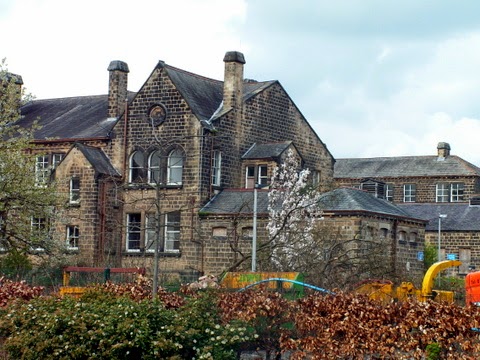A small portion of road after Manor Square is called Clapgate where the old Grammar School building stands on the site of an earlier foundation dating to 1607. Known as Prince Henry's Grammar School after The Prince of Wales, it was endowed by Henry Cave. The present building was built from the older material in 1840 and closed in 1874. At the beginning of the 19th century the building was also used as a church courthouse and a relic of this time is Gallows Hill on the Pool Road where executions, sanctioned by The Archbishop, took place. The last person to be hanged there was in 1614. The Grammar School was also used as a town courthouse until a new courthouse and police station were built nearby.
This name above the door of an adjacent building recalls that it was once the Royal Oak pub and dates to c1651. The pub closed in 1971
and now contains offices.
On the other side of the road is the entrance to Bay Horse Court which exits through a passageway to the Market Place. The old pub stables are situated in this courtyard together with a number of small shops.
Courthouse Street
The 'new' courthouse and police station were built in Courthouse Street in the mid 19th century and closed down in 1997. The complex is now an arts centre and from time to time it is possible to visit the old cells.
Otley has long been used by television companies and many episodes of Emerdale and Heartbeat have been filmed here. Known as Ashfordly in Heartbeat the old police station was a regular feature of the programme.
Cattle Market Street reminds us that the area behind the old courthouse was once one of Otley's cattle market's. Today the large open space is used as a car park.
Bridge Street leads down to the River and was originally called Northgate.
Two more of Otley's pubs are in this street.
The Horse and Farrier and The Bridge.
Fish and chips are still popular in Otley where at least six such shops
are still trading.
The stone 7 arch bridge over the River Wharfe, a Scheduled Ancient Monument, carries the B6451 over the river to link the two halves of Otley. The eastern part of the bridge dates back to 1228 when the Archbishop had it built to provide a more direct route to York. It was substantially rebuilt and widened in 1775-6 and the pedestrian walkway was added in 1957.
Wharfemeadows Park on the north side of the river is a substantial
recreational area which starts with gardens and the park extends along the river bank with bowling green, children's play area, tennis courts and exercise area.
The first Wharfedale printing machine was invented in Otley by David Payne in 1858. A crucial step forward in printing, this one stop cylinder machine had a travelling bed which could deliver continuous print without having to stop between impressions. By the end of the century 2000 people worked for ten firms in Otley to produce this machine for world wide exportation and the industry continued until the 1980's.
A sandstone replica, commisioned by Otley Town Council, sculpted and designed by Shane Green Head of Art at Prince Henry's School, was unveiled at Wharfedale Meadows in 2012 to commemorate the Queen's Diamond Jubilee
There is a large children's play area but sadly the former open air swimming pool
is now derelict.
The town has a thriving brass band which performs at various venues throughout the year In the summer months the band occasionally gives an
open air concert in the park.
The weir serves a working paper mill which is on the site of the 12th century manorial corn mill. It retains the original water channels.
| 

























No comments:
Post a Comment